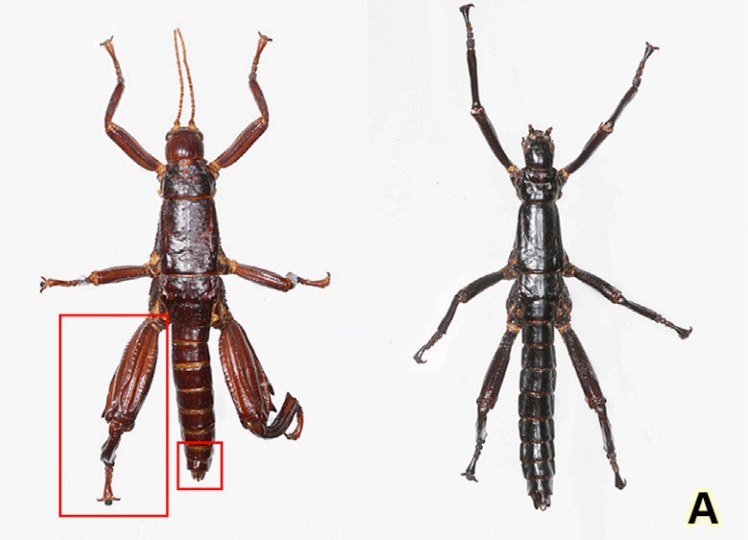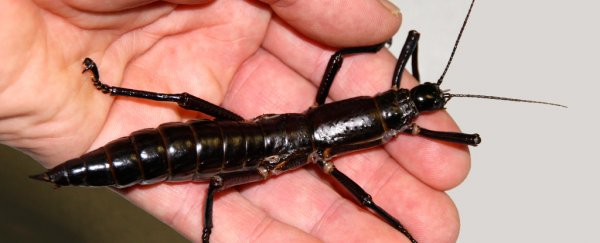A species is back from the grave, thanks to the hard work of an international conservation effort. The Australian Lord Howe Island stick insect, thought to have become extinct in the 1920s, is now officially alive again, confirmed by DNA testing.
The story spans decades, with a series of human failings, discoveries and eventual surprise successes that took DNA testing to finally get us to the good news there had only been slender hope for.
When black rats were accidentally introduced to the island by a shipwreck in 1918, 600 kilometres (370 miles) off the east coast of Australia, they devastated the population of the phasmid, Dryococelus australis.
The rats were a disaster. They wiped out several native species - five birds, two plants and 13 invertebrates (including D. australis) - not found anywhere else in the world.
But in the 1960s, rock climbers on Ball's Pyramid, a volcanic stack 20 kilometres (12 miles) southeast of the island, made an exciting discovery: a collection of fresh insect corpses that seemed to be the stick insect.
But they didn't look like specimens recovered from Lord Howe Island, as seen in the image below (the Ball's Pyramid insect is on the right), so the species was officially declared extinct in 1986.
 Mikheyev et al., Current Biology
Mikheyev et al., Current Biology
But then a small number of live insects was found in 2001, living on tea-trees on Ball's Pyramid, which spurred a captive breeding program. And now, finally, DNA testing has confirmed that the insects are, indeed, D. australis - an extremely rare success story.
"In this case, it seems like we're lucky and we have not lost this species forever, although by all rights we should have," said lead researcher Alexander Mikheyev, a professor at Okinawa Institute of Science and Technology Graduate University.
"We get another chance - but very often we do not."
Although the Ball's Pyramid insects didn't look like the Lord Howe Island specimens, comparison between the genomes of the two found less than 1 percent difference - a small enough difference that they can officially be declared the same species.
This means that eventually, they may be reintroduced to Lord Howe Island, pending the completion of a rat eradication program that is due to commence in 2018.
"Had our findings demonstrated that the Ball's Pyramid population was a distinct species, the release of these insects on Lord Howe Island would be regarded as an introduction," the researchers wrote in the paper.
This would mean a lot more red tape, since (and rightfully so) introducing a new species faces scrutiny and legislative barriers that reintroducing a species does not. But reintroduction would also mean that the insect would hopefully be able to breed and thrive in a much larger and more hospitable habitat.
Currently, they are still considered critically endangered.
 Ball's Pyramid by Jon Clark, Flickr
Ball's Pyramid by Jon Clark, Flickr
But they no longer number among the 868 species classifed as extinct due to human causes on the IUCN Red List, which tracks 500 years of records.
"The stick insect illustrates the fragility of island ecosystems, and in particular, how vulnerable they are to manmade change like invasive species," Mikheyev said.
"It just took one shipwreck, and the fauna of the island has been altered in such a fundamental way."
The paper has been published in the journal Current Biology.
